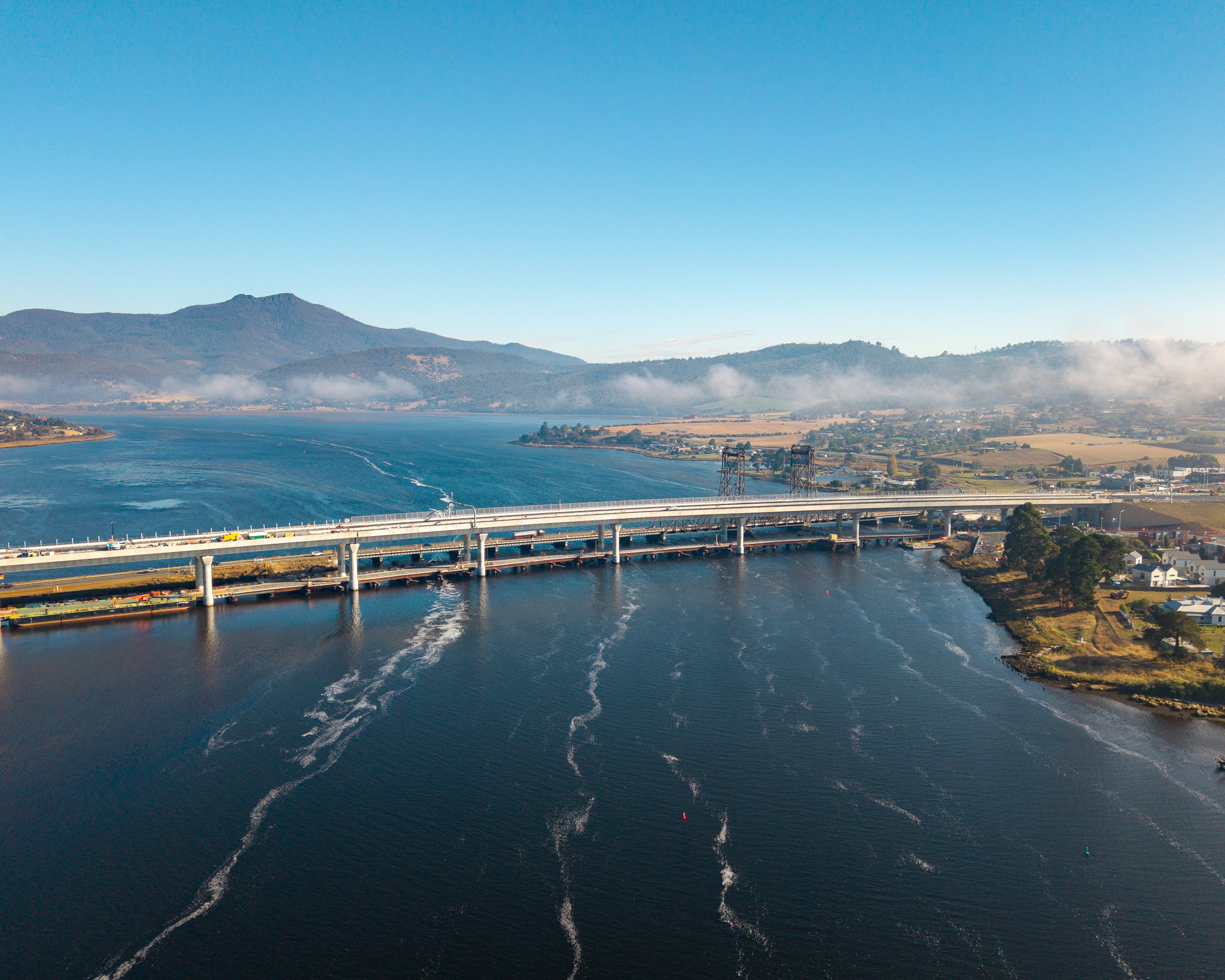To celebrate, there will be a free 1km bridge walk on Sunday, June 1, as the state government makes a family fun day of it.
Infrastructure Minister Kerry Vincent says the bridge walk will happen from 10am-2pm.
“This once-in-a-generation project will improve travel times, increase safety and better connect the communities either side of the bridge,” he says.
“The community celebration will feature food, live entertainment, family-friendly activities and the unique opportunity to walk across Tasmania’s biggest transport infrastructure project,” he said.
Shuttle buses will run from Cove Hill Road Precast Yard, Brighton Civic Centre and the Trade Training Centre (both on Green Point Road) to the bridge.
It has taken more than 900 days to build the 1.2km-long bridge which was funded by state and federal governments. It will fill a missing link between the Brooker Highway at Granton and the Midland Highway at Bridgewater, the state government says.
The bridge will replace the one opened in 1946 which has become unsafe, unreliable and too costly to maintain, the government says.
The new bridge will feature four traffic lanes, shared bike/pedestrian path, safety screens and barriers, a minimum speed limit of 80 km/h and navigation clearance over the Derwent river in line with the Bowen Bridge.
The bridge could also be included in the rail corridor if needed, according to the state government.
Those wanting to attend the opening should register here.
CONSTRUCTION DETAILS
A grade separated interchange will connect the Brooker and Lyell highways with connections to local roads in Bridgewater and Granton.
Over 18 months, the project’s purpose-built precast facility made 1082 segments with each one weighing 50-90 tonnes and measuring 15 metres wide.
The segments were cast using five moulds and stored on site before they were driven 2km down the road to the construction site and lifted into place using specially designed machinery.
The government says that at peak production, almost 28 segments were lifted into place every week by more than 100 people.






